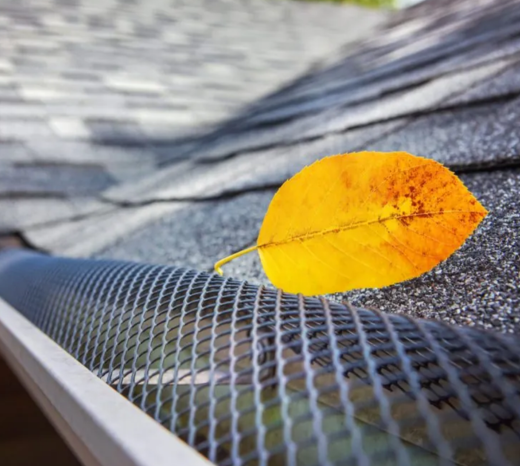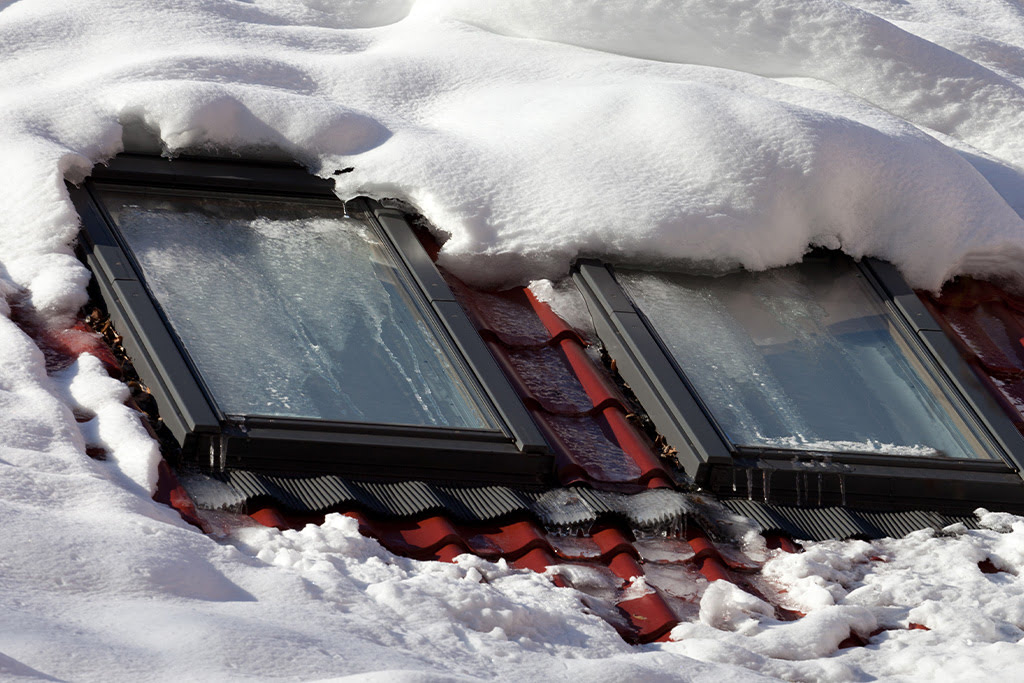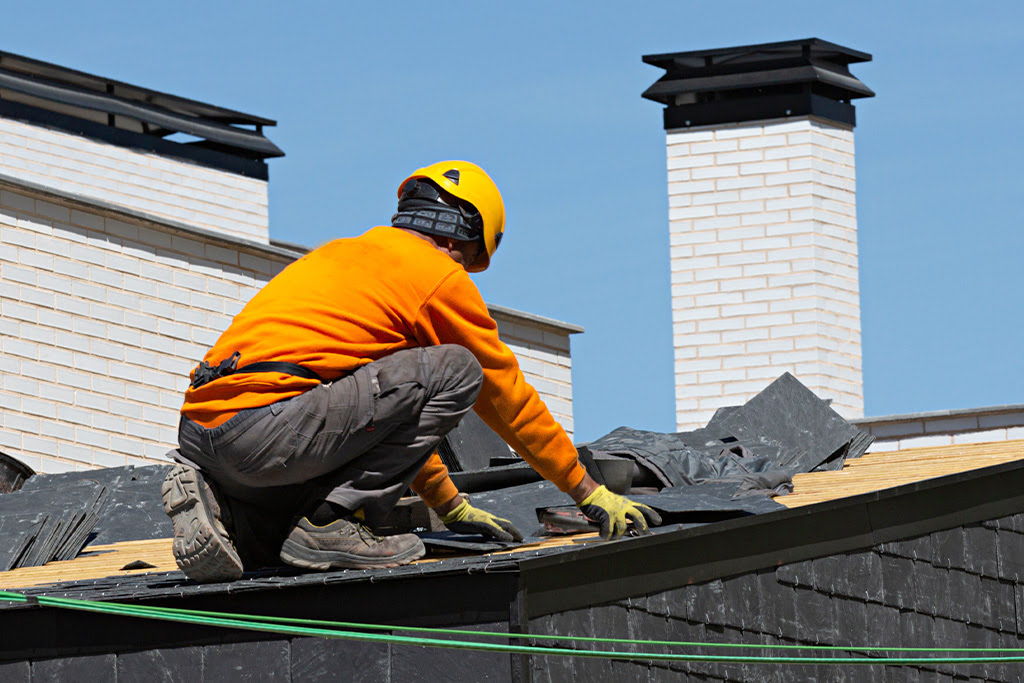What Are Ice Dams?
Whether you’re a fan of winter or not, there’s no denying hanging icicles and frost are enchanting. But those beautiful icicles hanging off your eaves are hiding something a bit more serious: ice dams.
Ice dams are ridges of ice that form along the edge of your roof and prevent melted snow and water from...

What Are Ice Dams?
Whether you’re a fan of winter or not, there’s no denying hanging icicles and frost are enchanting. But those beautiful icicles hanging off your eaves are hiding something a bit more serious: ice dams.
Ice dams are ridges of ice that form along the edge of your roof and prevent melted snow and water from draining.
Ice dams may not seem that bad, but they can weigh an extraordinary amount, compromising the structure of your roof and home.
What Causes Ice Dams?
Ice dams form when heat loss, snow cover, and outside temperatures interact, causing snow to melt and refreeze. Essentially, they form when warm areas of the roof cause snow to melt and run into cold regions on the roof where it refreezes.
These warm spots are caused by heat flowing through the ceiling to the roof or the bright sun warming the roof shingles, even if the air temperature is below freezing. Weather patterns can also be responsible for melting and freezing snow.
Many Calgarians are familiar with this common phenomenon. Our colder winters combined with chinooks that bring in warmer air causes periods of melt that cause slow runoff with plenty of time to refreeze.
Can Ice Dams Cause Damage?
Ice dams can cause water to back up and seep under shingles. From there, this meltwater can run into the house, ruining ceilings and walls. Aside from stripping paint and wrecking insulation, collected moisture can also cause mold and mildew to grow.
When large ice dams break off, they can take shingles and gutters with them. They can also damage anything they land on, like bushes, windowsills, cars, or even people and pets.
How to Fix & Prevent Ice Dams
Preventing Ice Dams
Prevention is the best medicine, as the saying goes. Steps to prevent ice dams from forming include:
- Making your ceiling airtight by sealing leaks where warm air can escape through the ceiling to below the roof decking.
- Increasing insulation in your living spaces to prevent heat loss through your ceiling.
- Improving insulation in your attic space to prevent heat loss through your roof.
- Adding ventilation in the space between insulation and roof decking. Ventilation will carry away any warm air that leaks through your ceiling.
Heat-Lines
Adding Heat-Lines to your roof is one of the best ways to prevent ice dams. Heat-Lines provide freeze protection for your roof, gutters, and pipes by melting excess ice and snow. Once installed, Heat-Lines can be a permanent solution to ice dam problems.
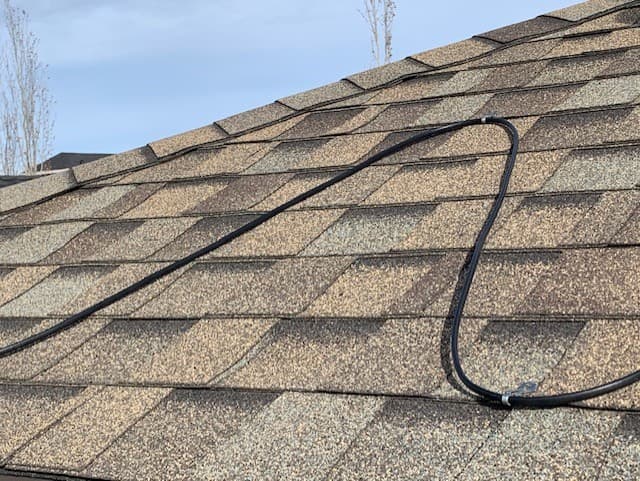
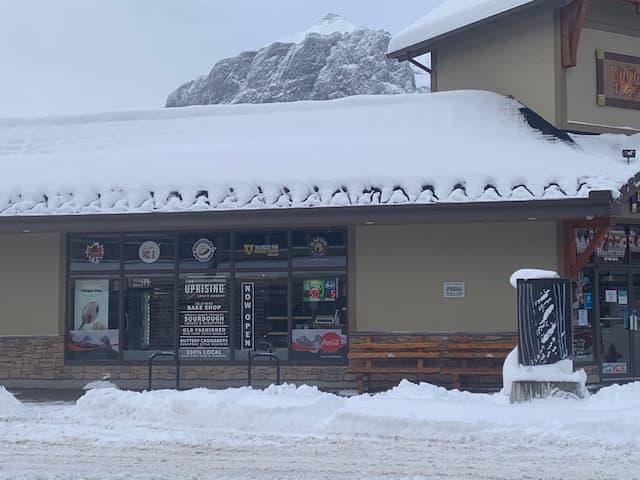
Fixing Ice Dams
It doesn’t take much heat to raise your roof temperature above 0℃. Even if you do everything right with ventilating or insulating your home, ice dams can form anyway. Just a little bit of warm air from your attic or some radiant heat from the sun can warm your roof enough to melt accumulated snow.
If you see ice dams forming on your roof, you can take some steps to stop them from getting worse:
- Hire a professional to come out and remove ice dams before they cause damage.
- You can remove small ice dams by breaking them into smaller pieces using a mallet. DO NOT use a sharp tool, like an ax or knife, because they can damage shingles and your roof. Breaking up ice dams is dangerous work, so take caution.
- Clear your gutters and downspouts of snow, debris, and ice. If your gutters and downspouts are clogged, melting snow has nowhere to go. Again, this is dangerous work, especially in winter conditions, so do this with caution. You can also install a continuous hanger system, which can also help prevent debris and snow build-up in your gutters.
- Using a long-handled rake, remove snow from the last 4 feet of your roof after heavy snowfalls. Use light pressure so you don’t inadvertently damage your shingles. NEVER get up onto your roof to remove snow in the winter. If there’s no snow, there’s nothing to melt and create an ice dam.
When Worried About Ice Dams, Hire a Professional
This may all sound overwhelming when all you want to do is prevent leakage into your home. But the good news that roofing, ventilation, and insulation professionals are available to help in just these types of situations!
Roofing and exterior professionals have the experience and knowledge to safely work on roofs in winter conditions and know how to avoid damaging your roof or house.
When a house is tightened up to prevent heat loss, professionals also know the appropriate steps for ensuring your ventilation systems and exhausting devices have enough space and air to operate effectively and safely. If you’ve ever struggled with ice dams, or you’re worried about the chances of them forming on your roof (especially on these warmer winter days), don’t wait to have a professional come and check out your home! It could save you a headache in the future.

